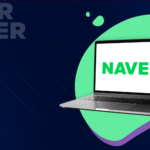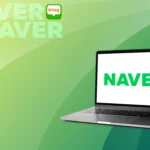NAVER( [nei·br] Hangul: 네이버/ ) is a Korean-language “Portal” which displays search results in several curated sections on a single screen, such as news, images, video, shopping, and advertising websites, and it is in fact Korea Largest Search Engine.
Despite Google’s best efforts to expand its presence in Korea, Naver keeps dominating the market with around 58% market share. In this article we will explore the characteristics of Naver SEO, its algorithm, what are Naver properties, and practical strategies to optimize your website for improved visibility and success.
Naver Properties: Exploring the Ecosystem
Naver offers various properties that complement its search engine, allowing users to engage in multiple platforms. These properties include Naver Blog, Naver News, Naver Shopping, Naver Encyclopedia, Knowledge iN, Naver Maps, and Naver Cafe. Understanding these properties and leveraging them strategically can boost your website’s visibility and authority.
Naver Powerlink Ads:
The keyword search advertising from Naver. This section of the SERP contains up to 10 advertisements in competitive keywords. You can check more in deep about this topic in our article about Naver Ads.
NAVER Blogs:
When you set up a NAVER Search Advisor (Webmaster Tools) account, you are automatically given a NAVER blog information, which you can use in the same way as you would an externally hosted blog on a platform like WordPress. While NAVER claims that it doesn’t discriminate against externally hosted blogs, it’s worth noting that the search engine is better at crawling and indexing NAVER blogs.
NAVER Posts:
As of the 30th of April, 2025, Naver Posts is unavailable.
A stripped-down version of NAVER Blogs. Rather than allowing you to the network by adding “neighbors” and engaging with them (like on NAVER Blogs), it has a “follow” feature and focuses on the writer’s expertise on a particular topic.
NAVER Café:
This is a community-based platform, like Reddit or Baidu Tieba, that functions like a message board or forum for members with common interests to share knowledge and engage in discussion of that topic. Each “café” acts like a Subreddit with a niche focus and opportunity to build a community for information sharing.
Websites:
The website search result shows relevant web pages to the keyword; it looks pretty much the same as a Google search results page. However, on Naver the average number of organic results is four, so securing a spot on the first page can get quite tricky.
NAVER Encyclopaedia:
This is similar to Wikipedia (and considered just as authoritative by NAVER’s ranking algorithms) but much less restrictive as it allows users to set up branded pages. On the search engine page, it is displayed as a vertical search result and features results drawn from Wikipedia as well as its own platform.
Knowledge iN:
This product takes data in from a number of sources, including itself, and can appear prominently in search results, especially for searches phrased as a question. It functions in a similar way to Yahoo Q&A and Quora to provide users with answers to interrogative searches. Any user can post a question that other users can help to answer, across a multitude of different topics, and answers can be upvoted (in a similar fashion to a Reddit post) by other Naver users.
Naver Algorithm: Understanding Search Mechanics
For an updated information of Naver Algorithm, check out InterAd’s article.
Naver’s algorithm has undergone significant changes over the years to enhance user experience and combat spam. Initially relying on keyword density, the algorithm now incorporates factors like relevance, user behavior, social signals, and page quality. Fresh and original content is favored, while the comprehensive rank (C-Rank) system evaluates the popularity and influence of websites.
P-Rank:
This algorithm uses similar global web standards to those employed by Google, looking at certain search engine optimization (SEO) criteria of a website to determine its quality, and was introduced by NAVER in an attempt to make its organic results higher quality. Using a form of artificial intelligence data processing, this algorithm processes a number of ranking factors to ascertain the quality of a webpage and its relevance to a query. These include website crawlability and accessibility, page optimization and metadata, website structure and internal linking, mobile usability, number and quality of backlinks pointing to a website, and social media signals. Due to NAVER’s dependence on paid advertisements, there are definite limitations on the effectiveness of SEO on the search engine, but paying attention to these metrics will help sites rank highly.
C-Rank:
This is the algorithm that applies to the Blog section in Naver. It uses content, context and chain metrics to rank search results, and identify the authority, popularity, and reliability of user-generated content. The “chain” metric refers to conversion, a marketing term that means how many people have visited your content/page as a measure of popularity. The algorithm determines the authority of each content creator categorizing webpages by thirty-one different types depending on the title tag and the content. NAVER uses deep learning technology to determine different content types but many blogs are not favored by this algorithm as it prioritizes those with high rates of traffic and gives the top spots in its rankings to those deemed to have the most authority on a specific subject.
Deep Intent Analysis (DIA):
The DIA algorithm looks to identify the user’s search intent based on the content they access and reflects this in the search engine rankings. It uses various metrics to measure a user’s intent or preference for specific content, including time spent on a web page, the number of shares of a blog, comments, etc. It is unlikely that NAVER will disclose the entirety of the algorithm but the best tactic to keep content ranking high in search results is increasingly creating content that satisfies the user. The DIA algorithm paired with the P-Rank algorithm in particular means that NAVER’s search results are showing more similarity to Google’s than ever before. Previously, the number one way to rank high in NAVER search results was considered to be up-to-date content, mainly created on NAVER Blog. Now, however, the search engine includes more external content and web pages, and it is necessary to satisfy all three algorithms in order to stay high in NAVER’s rankings.
How to Optimize for Naver SEO: Effective Strategies
Here we have listed some things marketers should have into account when trying to get better organic visibility in Naver Search Engine.
On-Page SEO:
- Open a Search Advisor Account and set it up to have better insights of your website’s performance on Naver.
- Comply with Search Advisor technical recommendations – read this article to learn how to use Naver’s Search Advisor.
- Do a thorough keyword research. Keyword research is always an important step when doing SEO, but the tools that marketers use when researching for Google usually don’t have access to Naver’s database. To check accurately keyword volume on Naver, you will have to open a Naver Ads Account and explore their Keyword Tool. Check out InterAd’s ultimate guide to the data laba tool for a more comprehensive yet simple deep dive.
- Concise Titles and Descriptions: Craft relevant and concise titles and descriptions that align with your brand. Limit your titles to 40 characters or less and avoid keyword stuffing.
- User-Centric Content: This is no different than Google. Focus on providing informative and helpful content that satisfies users’ needs and preferences.
Off-Page SEO:
- Brand Building: Is no secret that Naver favors its own properties over organic results. Engaging with Naver properties like Naver Blog, Naver Posts, and Naver Knowledge will help you to build brand awareness and reputation.
- Content Marketing: Utilize platforms like Naver TV Videos, Naver Library, and guest posting to share valuable content and acquire quality backlinks.
- Listing Management: Register and optimize your business information on relevant platforms to improve visibility and credibility.
- Ratings and Reviews: Collect, monitor, and respond to ratings and reviews to enhance user trust and reputation.
Optimizing your website for Naver SEO presents a unique opportunity to tap into South Korea’s thriving digital landscape. By understanding Naver’s algorithm, leveraging its diverse properties, and implementing effective on-page and off-page SEO strategies, you can enhance your website’s visibility, authority, and user engagement. Stay updated on Naver’s advancements and refine your strategies to ensure long-term success in the South Korean market or get in touch with us for a free consulting session.





